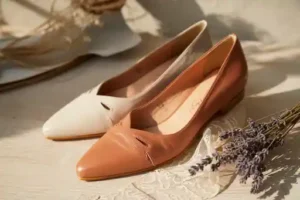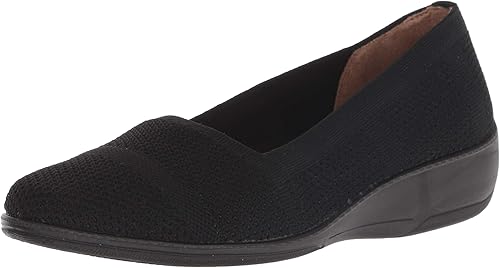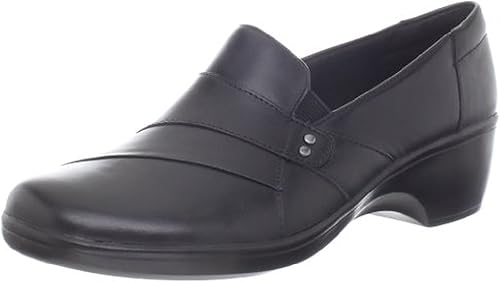Finding the perfect pair of dress shoes can be a challenge for anyone, but for women living with neuropathy, the task becomes significantly more complex. The discomfort, numbness, or tingling associated with nerve damage often means sacrificing style for comfort, leaving many feeling limited in their footwear choices. However, the good news is that the market has evolved, offering innovative designs that prioritize both therapeutic support and elegant aesthetics. This guide is dedicated to helping you discover the Best Women’S Dress Shoes For Neuropathy, ensuring your feet feel as good as they look, no matter the occasion.

Neuropathy can make even the softest shoe feel like a torture device if not properly designed. Pressure points, narrow toe boxes, and high heels can exacerbate symptoms, leading to pain and further complications. Our goal is to cut through the noise and present you with options that truly understand the unique needs of sensitive feet. We’ve meticulously researched and reviewed a selection of dress shoes that offer features like superior cushioning, ample toe room, stable support, and flexible materials, all without compromising on sophistication.
Whether you’re attending a formal event, heading to the office, or simply want a stylish option for a night out, you deserve shoes that provide both relief and confidence. Dive into our comprehensive reviews and buying guide to find your next favorite pair, designed to keep you comfortable and chic from day to night.
| Product Name | Key Features | Rating | Buy Now |
|---|---|---|---|
| LifeStride Womens Rozz Mary Jane Pump | Soft System comfort, low block heel, flexible sole, Mary Jane strap | 4.4/5 | View on Amazon |
| LifeStride Womens Immy Ballet Flat | Soft System comfort, flexible construction, slip-on design, rounded toe | 4.3/5 | View on Amazon |
| Clarks Womens May Marigold Mary Jane | OrthoLite footbed, genuine leather, stable heel, adjustable strap | 4.6/5 | View on Amazon |
| Women Dress Pumps Orthotic Orthopedic Bunion Shoes | Orthopedic design, wide toe box, arch support, bunion-friendly, low heel | 4.2/5 | View on Amazon |
| DREAM PAIRS Womens Chunky Low Block Heel Pumps | Memory foam insole, stable chunky heel, anti-slip outsole, classic design | 4.0/5 | View on Amazon |
Contents
- 1 The Reviews: Our Top Picks for Neuropathy-Friendly Dress Shoes
- 2 1. LifeStride Womens Rozz Mary Jane Pump
- 3 2. LifeStride Womens Immy Ballet Flat
- 4 3. Clarks Womens May Marigold Mary Jane
- 5 4. Women Dress Pumps Orthotic Orthopedic Bunion Shoes
- 6 5. DREAM PAIRS Womens Chunky Low Block Heel Pumps
- 7 Buying Guide: Choosing the Best Dress Shoes for Neuropathy
- 8 Frequently Asked Questions About Neuropathy Dress Shoes
- 9 Conclusion
The Reviews: Our Top Picks for Neuropathy-Friendly Dress Shoes
Buying Guide: Choosing the Best Dress Shoes for Neuropathy
Selecting footwear when you have neuropathy requires careful consideration beyond just aesthetics. The right pair of shoes can significantly improve comfort, reduce pain, and prevent further foot complications. Here’s what to look for:
Prioritize Cushioning and Support
The most critical feature for neuropathy sufferers is adequate cushioning. Look for shoes with well-padded insoles, memory foam, or gel inserts that absorb shock and distribute pressure evenly across the foot. Good arch support is also essential to maintain proper foot alignment and reduce strain. Some shoes offer removable insoles, allowing you to insert custom orthotics if needed.
Ample Toe Box
A cramped toe box can exacerbate nerve pain and lead to bunions, hammertoes, or corns. Opt for shoes with a wide, deep, and rounded toe box that allows your toes to wiggle freely without any pressure. Avoid pointed-toe styles, which can compress the toes and cause discomfort.
Stable, Low Heel
High heels shift body weight forward, putting excessive pressure on the forefoot, which is particularly sensitive for those with neuropathy. Choose shoes with a low heel (1 to 1.5 inches maximum) or a completely flat design. If a heel is desired, a wide block heel offers significantly more stability than a stiletto, reducing the risk of falls and providing better balance.
Soft, Flexible, and Breathable Materials
The shoe’s upper material should be soft, flexible, and non-irritating to sensitive skin. Genuine leather, soft synthetics, or stretchy fabrics are good choices as they conform to the foot’s shape and minimize rubbing. Breathable materials also help regulate foot temperature and prevent moisture buildup, which can lead to skin issues.
Secure Fit and Easy Adjustability
A shoe that fits securely but isn’t too tight is crucial. Slip-on shoes can be comfortable, but styles with adjustable straps (like Mary Janes or buckles) offer better security and can accommodate minor swelling throughout the day. Ensure the shoe doesn’t slip at the heel, which can cause friction and blisters.
Outsole Traction
Neuropathy can affect balance and proprioception. A good dress shoe for neuropathy should have a sturdy, non-slip outsole to provide reliable traction and prevent accidental falls, especially on smooth or wet surfaces.
Frequently Asked Questions About Neuropathy Dress Shoes
Q1: Can I wear heels if I have neuropathy?
A1: It’s generally recommended to avoid high heels. However, low, wide block heels (1-2 inches) that offer good stability and cushioning can be an option for some individuals, depending on the severity of their neuropathy. Always prioritize comfort and stability.
Q2: What’s the most important feature for neuropathy shoes?
A2: Superior cushioning and a wide, non-constrictive toe box are arguably the most critical features. These help protect sensitive feet from pressure, friction, and impact, which can exacerbate neuropathy symptoms.
Q3: Should I buy shoes in a wider size?
A3: Many individuals with neuropathy benefit from shoes in a wider width, even if they don’t typically wear wide sizes. This provides extra room for sensitive toes and can accommodate mild swelling or custom orthotics. Always measure your feet and consult size charts.
Q4: How often should I replace my neuropathy-friendly shoes?
A4: The lifespan of shoes depends on wear and tear, but for neuropathy, it’s crucial to replace them when the cushioning or support starts to break down, typically every 6-12 months for daily wear. Worn-out shoes can lose their protective qualities and lead to discomfort.
Q5: Are custom orthotics necessary with these shoes?
A5: While many neuropathy-friendly shoes offer excellent built-in support, custom orthotics can provide personalized cushioning and alignment correction. If you use orthotics, look for shoes with removable insoles to ensure a proper fit.
Conclusion
Navigating the world of dress shoes with neuropathy doesn’t have to mean sacrificing style for comfort. The market now offers fantastic options that blend elegant aesthetics with crucial therapeutic features. After reviewing several top contenders, we can confidently recommend some standout choices.
For the Best Overall blend of style, comfort, and support, the Clarks Womens May Marigold Mary Jane takes the lead. Its premium leather, exceptional OrthoLite cushioning, and stable heel make it a reliable and sophisticated choice for various occasions.
If you’re on a tighter budget but still need reliable comfort, the LifeStride Womens Rozz Mary Jane Pump is our pick for the Best Budget option. It offers LifeStride’s renowned Soft System comfort and a secure fit at a very accessible price point, proving that you don’t have to break the bank for neuropathy-friendly footwear.
Finally, for those who require dedicated orthopedic solutions, the Women Dress Pumps Orthotic Orthopedic Bunion Shoes are the Best Specialized choice. They are specifically engineered to address common foot issues like bunions alongside neuropathy, providing targeted relief without compromising on a dressy appearance.
Remember, the best shoe for you will always be the one that fits your unique foot shape and provides the most comfort and support for your specific neuropathy symptoms. We hope this guide helps you step out in confidence and comfort!

I am an accomplished footwear blogger with a keen eye for style and a passion for shoes. My deep-rooted love affair with footwear began at a young age when I would spend hours perusing shoe stores, admiring the intricate designs and imagining the stories they could tell.




